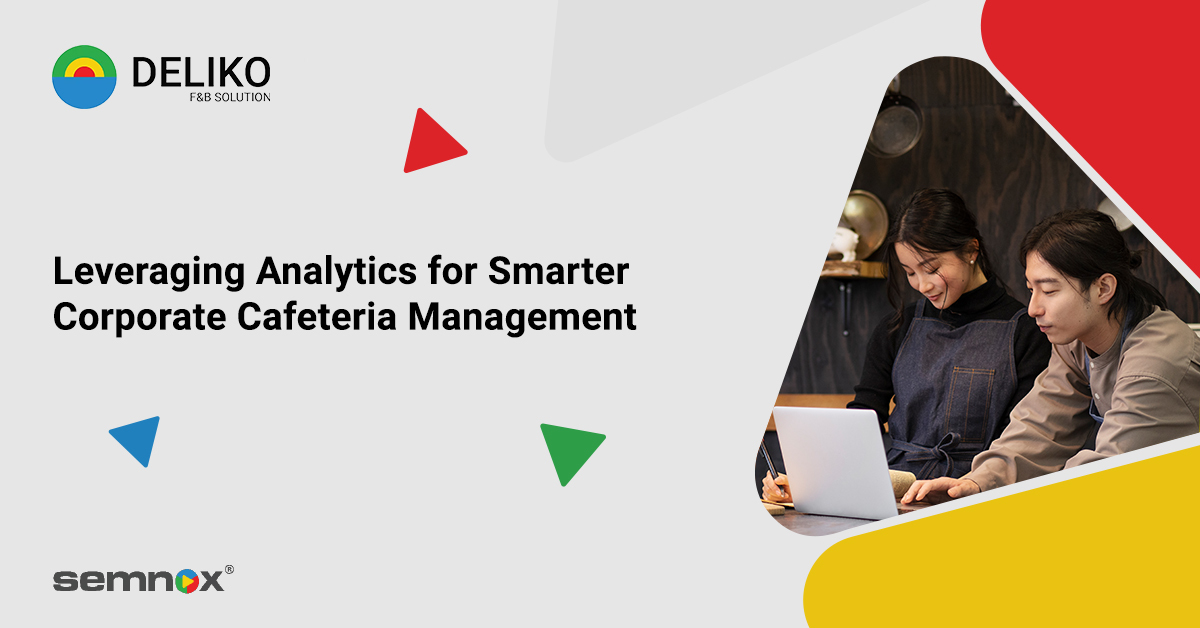
Data-Driven Decisions: Leveraging Analytics for Smarter Corporate Cafeteria Management
In today’s increasingly frenzied corporate landscape, companies always seek a competitive edge. Data analytics has emerged as a game-changer that can redefine how companies go about their management and operations. Whether it’s a retail business or a restaurant chain, data analytics has revolutionized the way businesses make decisions.
In this blog, we will explore why data analytics has grown so useful in today’s world and how one can leverage analytics for smarter corporate cafeteria management.
Why Is Data Analytics A Powerful Tool?
Data analytics is the process of gathering, assimilating and processing large amounts of consumer data to gain valuable insights into emerging trends and patterns. By harnessing the power of data, businesses can make smarter choices that propel growth, boost efficiency, and increase customer satisfaction.
Previously, corporate decisions were made based on either past experience or intuition. These methods were prone to bias and hence yielded limited success. The advent of sophisticated analytic software has transformed the way these decisions are made today.
Data analytics has gained prominence in corporate cafeteria management especially. By leveraging analytics, cafe owners can seamlessly optimize their operations, augment customer dining experience, and greatly improve their profit margins.
Leveraging Analytics for Smarter Data-Driven Decisions
From corporate dining analytics to menu optimization, data-driven decisions offer cafeteria managers precious insights to make smarter decisions, uncover subtle trends, establish consumer preferences, and fine-tune their offerings.
Here’s a look at how data-driven decisions can be leveraged for better office cafeteria management solutions.
Menu Optimization
An impactful use of leveraging data for corporate cafeteria management solutions is menu optimization. Analyzing user data helps identify which items are bestsellers and which items are least popular.
Cafe managers can then use this knowledge to adjust their menus, adding new variations of popular items while eliminating underperforming ones, thus maximizing sales. Moreover, data analytics of cafeteria POS systems can also help understand even more detailed aspects of sales.
For example, demographic-specific item popularity, order frequency, and the average spending per customer, thus presenting opportunities for improvement and revenue growth.
- Cafeteria Inventory Management
Data analytical software is capable of tracking inventory levels in real-time. This is a great bonus as it prevents capital wastage and overstocked ingredients from expiring. Similarly, if a certain product is selling rapidly, the software also ensures that the cafeteria has enough ingredients to meet consumer demand. - Demand Forecasting
Demand forecasting can prove to be highly profitable when it comes to corporate cafeteria management. Sophisticated software can incorporate varying factors such as the season, weather, public holidays, and special festivals to predict future demand accurately.
When corroborated with historical sales data, these factors help managers make smarter and more informed decisions, such as planning dishes and staffing levels in advance. This efficiency helps reduce waste while also ensuring the cafeteria is ready to maximize its sales.
Want to Harness the Power of Data Analytics? Deliko Provides an All Inclusive Management Software!
Data-driven decisions are central for smarter corporate cafeteria management. By leveraging the power of data analytics, cafeterias can enhance their consumer satisfaction while limiting operational costs.
Implement Deliko in your cafeteria chain, a product of Semnox that is revolutionizing the restaurant industry. Make use of this powerful one-stop solution for all your corporate cafeteria management solutions and gain a competitive edge over the industry.
FAQ
What is data-driven decision making for restaurants?
Data-driven decision making for restaurants involves the strategic use of data and analytics to inform key choices within a restaurant’s operations. It entails analyzing various data sources, such as sales and customer preferences, to optimize menu offerings, inventory management, and overall operations, with the ultimate goal of enhancing profitability and customer satisfaction.
What are three benefits of data-driven decision-making?
Improved Customer Satisfaction: By analyzing customer data, restaurants can better understand their preferences, allowing for tailored menu offerings and promotions that enhance the dining experience.
Increased Profitability: Through data-driven decisions, restaurants can optimize their menu offerings and manage inventory efficiently, resulting in higher profitability.
Enhanced Operational Efficiency: Data-driven insights enable restaurants to streamline their operations, from inventory management to staffing, leading to improved overall efficiency.
What are the five analytical skills of data-driven decision-making?
Data Collection and Analysis: The ability to gather and analyze data from various sources.
Statistical and Quantitative Analysis: Proficiency in statistical techniques and quantitative data analysis.
Data Visualization and Reporting: The skill to present data in a clear and meaningful way for decision-makers.
Predictive Modeling: Creating models to forecast future trends and outcomes based on historical data.
Critical Thinking and Problem-Solving: The capability to think critically and solve complex issues using data-driven insights.
What are the four steps of data-driven decision making?
Data Collection and Processing: The initial step involves collecting relevant data from various sources and processing it for analysis.
Analysis and Interpretation: Data is then analyzed, and insights are drawn to inform decision-making.
Decision Formulation: Based on the analysis, decisions are formulated to optimize various aspects of restaurant operations.
Implementation and Monitoring: Decisions are put into action and continuously monitored to assess their impact and make necessary adjustments.
What are examples of data-driven decision-making?
Optimizing Menu Offerings: Restaurants can use sales data and customer preferences to adjust their menu, introducing new popular items and removing underperforming ones.
Managing Inventory: Real-time inventory tracking ensures ingredients are not wasted and that high-demand items are always in stock.
Forecasting Demand: By considering factors like seasons, weather, and special events, restaurants can predict future demand accurately, helping in planning menu items and staffing.
Personalized Marketing: Customer data can be used to create personalized marketing campaigns and loyalty programs.
Staffing Decisions: Based on historical sales and predicted demand, restaurants can make staffing decisions to ensure efficient operations.

Suresh Kumar
As a highly experienced thought leader in the hospitality industry, Suresh Kumar carries a unique combination of global experience and multi-industry specialty. With 15 years of experience as the marketing head and director of Lucid IT Solutions and seven years of directing sales at Pazo, Suresh has especially honed skills with F&B and restaurant POS — skills that make him an irreplaceable asset at Semnox. Now, he spearheads the realm of cafeteria management solutions through seamless business operations and collaborative development.
